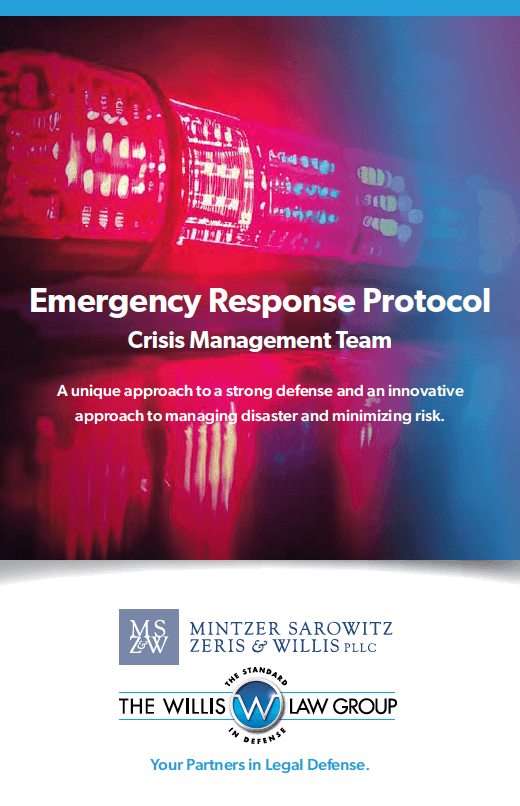DAY OF ACCIDENT SURVEILLANCE: HOW MUCH IS ENOUGH?
Nov 1, 2019 - News by Lawrence M. Kelly
Although the general issue of spoliation of evidence and its ramifications have been established in Pennsylvania jurisprudence for years, a recent appellate court decision has applied these principles to the amount of day-of-accident video surveillance to be retained.
In Marshall v. Brown’s IA, LLC (“Shop Rite”)i the Pennsylvania Superior Court vacated a defense verdict in favor of the operator of a store because the store did not retain enough surveillance video from before plaintiff’s slip and fall.
The plaintiff was a customer at a Shop Rite supermarket when she slipped on water on the floor and claimed injuries. Shop Rite employees came to her aid and completed an incident report. Approximately two weeks after the incident, Shop Rite received a letter of representation from plaintiff’s counsel requesting that Shop Rite retain surveillance video to include six hours prior to the accident and three hours after the accident. The Court noted that this letter was received within Shop Rite’s normal thirty day period prior to any video being automatically overwritten. However, it was Shop Rite’s “rule of thumb” to only preserve video surveillance from twenty minutes before an incident up through twenty minutes after an incident.
Notwithstanding, the evidence showed that Shop Rite actually retained thirty-seven minutes of video prior to the fall, captured the actual fall, and retained approximately twenty minutes afterwards.
At trial, plaintiff’s counsel sought sanctions for a spoliation of the missing video in the form of an adverse inference to the jury but this request was denied by the trial judge. The sole issue raised by plaintiff on appeal was whether or not the trial court abused its discretion by declining to read a spoliation of evidence instruction to the jury concerning the additional portions of surveillance video timely requested by counsel. The trial court had reasoned that because the video quality was somewhat poor and the actual liquid could not be seen on the floor even at the time of plaintiff’s fall, that any additional prior video would not be relevant.
The Superior Court disagreed. After noting that a plaintiff’s burden of proving constructive notice of the liquid condition on the floor is a “heavy one”, the court then noted surveillance of the area of the fall beforehand could greatly assist in a number of key areas with respect to the constructive notice burden (or, the lack of constructive notice defense). “Video surveillance of the area for a more extended period prior to the fall may yield evidence highly probative of whether a premises owner had notice or whether he exercised reasonable care for the safety of business invitees”.
The court noted that even in instances where the camera fails to capture the offending substance on the floor, surveillance video may still have probative value. It might show someone dropping or spilling something in the area of the floor, although the residue is not visible. The video may also be instructive as to when an employee last entered the area of the dangerous condition before the fall.
So, what amount of pre-accident video must be retained? Unfortunately, this was not clearly defined. The court simply states “we find that the video surveillance tape depicting the events in the several hours prior to the fall was relevant for showing far more than the offending substance on the floor” (emphasis added). The court does note that the scope of relevant evidence is “not defined by plaintiff’s request”, i.e. the six hours. It then only recites the general rule of evidence regarding relevancy. This leaves open the question of how much is enough.
Suppose the store kept two hours of pre-accident footage, clearly a significant amount, but not the full six hours requested?
Although this opinion by the appellate court was somewhat predicable, and follows a line of published trial court opinions, it reiterates the need for defense counsel and claims professionals to help implement and reiterate what video should be retained when a slip and fall occurs. The amount of footage retained cannot strictly be measured by time alone. What is captured during the pre-accident footage can change the analysis. For instance, suppose the video showed an employee mopping the area of the fall a mere five minutes before the fall. Not only does this change the nature of the litigation but it would also likely allow the store to retain far less pre-accident video in terms of amount of time given the acts depicted. Going forward, these issues will likely be determined on a case-by-case basis. Thus the old adage of “more is better” applies for the foreseeable future.
i 213 A.3d 263 (Pa. Super. 2019).
Mr. Kelly is a partner in the firm’s Philadelphia office.



